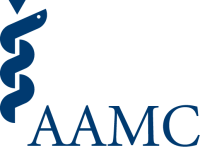AAMC Store
Sign in for the best experience
The Fundamental Role of the Arts and Humanities in Medical Education (PDF)
| Year Published: 2020 |
DIGITAL
$0.00
In stock
- Quick Download (will not put the PDF into your My Downloadable Products folder)
- The Fundamental Role of the Arts and Humanities in Medical Education
This publication reviews the historic and current state of arts and humanities integration into medical education, considers curriculum and assessment methods, and provides guidance on the research and change in culture necessary for effective integration.
The Fundamental Role of the Arts and Humanities in Medical Education (PDF)
| Year Published: 2020 |

SIGN IN FOR THE BEST EXPERIENCE
DESIGNED FOR
Designed for medical educators and faculty, students, physicians, and leaders in academic medicine.
OVERVIEW AND BENEFITS
The first two decades of 21st-century medicine have witnessed significant transformation in health care delivery, marked health disparities, civil unrest, unprecedented rates of physician burnout and suicide, and unforeseen public health crises in the forms of the opioid epidemic and the coronavirus pandemic. Physicians must be adaptive life-long learners who can effectively respond to these and future challenges. Physicians must learn to interweave their developing scientific knowledge with emotional intelligence, critical thinking skills, and an understanding of social context. The integration of the arts and humanities into medicine and medical education is essential to educating a physician workforce that can effectively contribute to optimal health care outcomes for patients and communities.
This publication does the following:
- Reviews the historic and current state of arts and humanities integration into medical education, considers curriculum and assessment methods, and provides guidance on the research and change in culture necessary for effective integration.
- Presents recommendations for integrating arts and humanities into medical education.
- Presents findings from a review of the literature on arts and humanities integration and an emerging theory of practice to support arts and humanities curriculum development.
- Reviews factors supporting the growth of arts and humanities integration and strategies to overcome barriers.
- Features examples of programs designed to achieve important learning outcomes, including narrative, improvisation, visual arts, music, theater arts, and the study of history.
-
This report was published as part of the AAMC FRAHME initiative.
This report was published as part of the AAMC FRAHME (Fundamental Role of the Arts and Humanities in Medical Education) initiative. Learn more about FRAHME and find related resources, including a digital Getting Started Guide for medical educators.
PRODUCT FORMAT
To download this publication as a PDF, either click the download link above or click “add to cart” and complete the checkout process to obtain the download link. A printed version of this product can be purchased through Amazon . Purchases would be subject to Amazon's terms and conditions.
TERMS OF SALE
This publication was developed by the AAMC to advance medical education. It is provided to the medical community at no cost for that purpose.
The AAMC respects your privacy. Please review our privacy statement, which governs our use of any information you provide to us.
QUESTIONS
If you have questions about the AAMC Store or your purchase, please contact the AAMC Store. Representatives typically respond within one business day.
| Number of Pages: 54 | Year Published: 2020 |
Search

